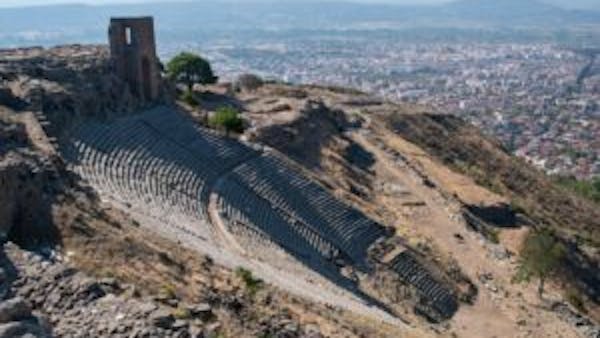Smyrna was known as the city of life and was located about forty miles north of Ephesus. One of the oldest cities in the world it was located at a strategic point on the Aegean coast of Anatolia which makes up most of modern-day Turkey. Smyrna is the only one of the seven cities mentioned in the book of Revelation that remains a strong, inhabited city. Today Smyrna is known as Izmir, a metropolitan city in Turkey. It is the third-largest city in Turkey and houses the second busiest port in the country.
The ancient city of Smyrna was a commercially successful metropolis largely due to its harbor and favorable location along one of the major trade routes through Asia Minor. Some historians identify it as the birthplace of the poet and historian Homer. While the earliest colonization of the area was in the first half of the 3 millennium BC it was later settled by Aeolians who remained in the area until the Ionian Greeks took over the area at the end of the 8th century B.C.
The temple of Athena in Smyrna was built in the 7th century B.C. and destroyed by the Lydian King Alyattes when he captured the city around 600 BC. The Persians captured Smyrna around 545 B.C. until the site of the original city was abandoned around the 4th century B.C.
When Alexander the Great swept through the area he rebuilt the city along the slopes of Mt. Pagus but the city wasn’t actually functional until Alexander’s general Lysimachus took over in the 3rd century B.C. It was after this takeover that Smyrna began to thrive and prosper as a viable seaport and commercial center in Asian Minor.
By the time the 1st century B.C. rolled around Smyrna was being called “the most beautiful of all cities.” Ancient historical sources describe Smyrna as being a thriving urban center with straight paved streets, a gymnasium, and many pagan shrines and temples.

